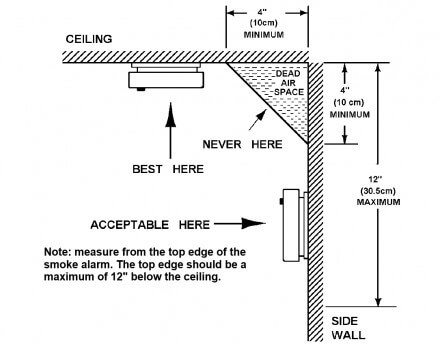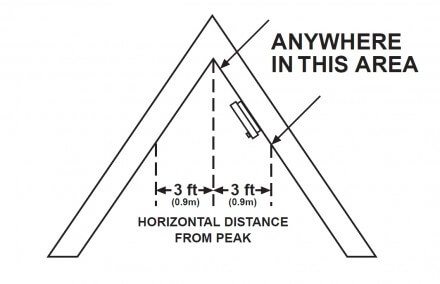I was recently emailed a question about smoke alarm locations; exactly where do they need to be installed? In the bedrooms? Outside of the bedrooms? Which levels? There are two ways to answer this question: what meets code, and what’s safe.
If we’re talking about what meets code, it gets complicated. Smoke alarms weren’t required 100 years ago. But if work was done to a home that triggered the requirement for smoke alarms, maybe smoke alarms are required. As a home inspector, I don’t make any attempt to figure out code requirements. Instead, I focus on what’s safe. I base these recommendations on the requirements for new homes. For everything I’m going to talk about, we’ll discuss new construction.
I’ll break this down by national codes, Minnesota requirements, and we’ll touch on some specifics for Minneapolis and Saint Paul.
National Codes
There is no nationally enforced building code. However, there IS a code adopted by all 50 states, called the International Residential Code (IRC). The code is amended at the state level, making it impossible to know what each state will require… but I’ve found that most states don’t vary from the national code for most things. This is what makes the CodeCheck books so popular and helpful: while they can’t be perfectly matched to the rules in every state, they come very close.
The latest version of the International Residential Code was published in 2024; it is revised every 3 years. For the latest version, the code requirements for smoke alarms are found in section R310.3. Here’s where you need them:
- Inside every sleeping room (aka bedroom).
- Outside each bedroom in a common area in the immediate vicinity of the bedrooms.
- On each story of the home, including basements and habitable attics. But not including crawl spaces and uninhabitable attics. If you have a split-level, the upper level counts for the lower level, as long as it’s less than a full story below.
There are a few other specific requirements in the latest version of the code, but they get pretty obscure. The one part that’s left open to interpretation is the “immediate vicinity” of the bedrooms.
Minnesota Code
While we’re using an older version of the IRC, the requirements are the same as those listed above. You also have the Minnesota Fire Code to consider, as well as Minnesota Statutes, but it really gets in the weeds. The bottom line is that you should follow the rules above for safety.
Minneapolis Specifics
If you’re selling a home in Minneapolis, you need to get a Truth-in-Sale of Housing Evaluation before you list your property. Minneapolis requires smoke alarms in a common area on every level of the home. This even includes an uninhabitable attic if there is a stairway leading to it. If your home doesn’t meet this requirement, it’s a required repair.
Saint Paul Specifics
Saint Paul also requires a Truth-In-Sale of Housing Evaluation before you list your home for sale. Their picky little thing about smoke alarms is that you need to have at least one hardwired smoke alarm at the property. If you don’t have one, you need to get one. They want it located in the hallway outside the bedrooms. So what if you have bedrooms in the basement and the second floor? They don’t tell you; you just need one. Not gonna lie, this ambiguity drove me a bit nuts back in the day when I was a licensed evaluator.
Here are the guidelines for hardwired smoke alarms in Saint Paul.
On the wall or ceiling?
The best place for a smoke alarm is typically on the ceiling, in the middle of the room. If the smoke alarm is going to be installed on a wall or on the ceiling near a wall, don’t place it too close to the corner. For specific installation instructions, follow the manufacturer’s instructions. Read The Friendly Manual (RTFM). They’re all pretty much the same. Manufacturers say to locate smoke alarms at least 4″ away from corners.
When installing smoke alarms on a sloped or peaked ceiling, use the diagram below for guidance.
Summary
The current standard for safety is to follow the IRC requirements for new homes. This means a smoke alarm in every bedroom, one outside the bedrooms, and at least one on every level.



No responses to “Where do smoke alarms need to be installed in Minnesota?”
No comments yet.
RSS feed for comments on this post. TrackBack URL
Leave a Reply